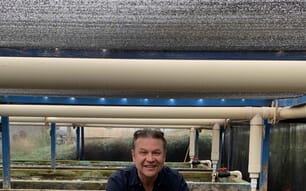Speaking on the project, the source said that the project that was started in October 2014 after a successful trial with the involvement of six farmer help groups from three places that include Malvan, Vengurle and Devgad situated along the Konkan coast in Maharashtra.
Under the project, Mangrove crabs, also known as mud crabs (Scylla serrata), are farmed in the one acre line that has been provided to farmers from MPEDA. Before the line was given, these farmers were trained by MPEDA scientists on crab farming, the source said.
The crabs are grown at a farm that is located in the mangroves and covered by high density polythine nets (HDPN), which were also provided by MPEDA.
As the crab is grown in the natural environment, there is no capital cost involved, the source stressed.
Each self-help group has been given two lines of 1 acre each. For an acre, 2000 seeds have been used, meaning a total of 4000 for the farm they operate.
The project is funded by the Maharashtra State Forest Department that has pumped over $240,000 (Rs 1.5 crore) into the project.
The crab seeds are provided to farmers for a mere $0.03 (Rs 2) per piece and will fetch farmers $16 (Rs 1000) per crab after nine months of harvesting.
Seeds are given to farmers from MPEDA’s hatchery in Tamil Nadu on a subsidised rate. Mud crab seed production is by the Rajiv Gandhi Centre for Aquaculture (RGCA), MPEDA in Tamil Nadu.
The season for crab farming in the mangrove region is from September to May and there is huge demand for mud crab in international markets.
Speaking on the project, the source said that if the pilot project is successful we will set up 15 new farms with the help of self-help groups starting from September 2015.
The project will cost over $1 million, however, the source did not reveal who will fund the project, but it is expected that the forest ministry will be funding it.
As the project uses natural mangroves for crab farming, no capital cost is involved, only the cost for nets and crab feeds. Crab feed can be fish that cannot be sold in the market, cut in pieces.
The source said, there is presently, no organised aquaculture of mud crab in India, for supporting the export trade.
The major reason being the non-availability/inconsistent availability of crab seeds for farming. Hence, only crab fattening is being practiced by the coastal farmers/fishermen, where soft crabs/water crabs (moulted crabs) caught in the wild are reared in brackish water tide fed ponds/pens in estuaries until they are hard and ready for marketing.
Besides exploitation, natural stocks are also dwindling owing to habitat loss due to several reasons including fast urbanization in the coastal belts.
When asked whether mud crab farming can be possible near Mumbai, which is surrounded by sea, the source said that water quality needs to be checked as it is often read in newspapers that sewage waters are discharged into the sea, so that will not work, but in Sindhudurg it has worked.
Rajiv Gandhi Centre for Aquaculture (RGCA), the research & development (R&D) arm of the MPEDA, located at Thoduvai, Sirkali in Nagapattinam District, Tamil Nadu has taken up R&D work on the production of mud crab seeds in the hatchery and has established a hatchery at Thoduvai Village, Sirkali, Nagapattinam, Tamil Nadu, the source added.
This hatchery is one among very few mud crab hatcheries in the world. The Philippines, Vietnam and China being the other countries having them.
This hatchery has been regularly producing mud crab seeds reared to crablet sizes at its demonstration farm and supplying to farmers in the area.
Crablets have also been supplied to several research institutions like the Central Institute of Brackish Water Aquaculture (CIBA) and the National Institute of Ocean Technology (NIOT) for their farming demonstrations.
The facility has also been carrying out ranching of crablets in estuarine and mangrove areas in Tamil Nadu from time to time for natural stock enhancement.
Owing to the highly cannibalistic nature of the larvae of this species, larval rearing of mud crabs is a very challenging task and survival rates achieved are extremely low when compared to other crustacean species and species of finfish.
But, scientists at RGCA have achieved a breakthrough survival of seven to 14 per cent against the world average survival rate of three per cent.
This encouraging breakthrough achieved by RGCA can open up avenues for commercialisation of mud crab hatchery technology leading to organised mud crab aquaculture in the coastal areas of the country especially among the weaker sections of the society giving them an alternate livelihood option and also to strengthen the production base of mud crab for export in live and value added products, the source said.
This can also result in reducing the fishing pressure on the natural stocks and thereby facilitating natural stock enhancement in the mangrove forests.




